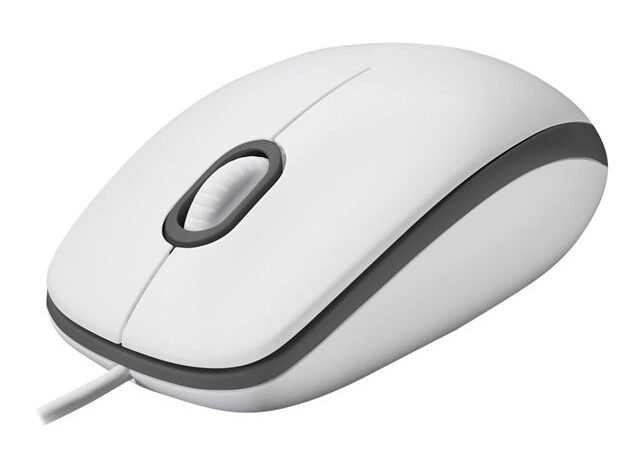Mouse: The Tiny Creature and the Game-Changing Device

Why “Mouse” Means More Than One Thing
When someone says the word mouse, it can mean two completely different things. For some, it’s that small, quick rodent that sneaks around fields, storerooms, and occasionally our kitchens. For others, it’s the everyday gadget sitting on the desk, guiding the pointer across a computer screen with every click and scroll. Both interpretations are correct, and interestingly, both carry far more importance than most people realize.
The animal mouse has been living alongside humans for centuries, sometimes as a pest, sometimes as a helper in science, and sometimes as a symbol in folklore and entertainment. On the other hand, the computer mouse is one of the most influential inventions in the tech world, shaping how we interact with machines and making computers accessible to the masses.
This article dives deep into both worlds—the biological mouse and the digital mouse—exploring their significance, history, and role in our lives. By the end, you might see this little word in a much bigger way.
The Animal Mouse: Small in Size, Big in Impact

Mouse Mice are among the most adaptable creatures on the planet. They can live almost anywhere—fields, forests, deserts, urban areas—you name it. Their survival skills are remarkable, relying on quick reflexes, sharp senses, and the ability to reproduce at a rapid pace. While most people think of them as pests, their presence in nature is far more valuable than we often give them credit for.
In ecosystems, mice are essential as prey for a wide range of animals, including snakes, owls, hawks, and foxes. Without mice, many predator populations would struggle, leading to imbalances in the food chain. They also play a role in seed dispersal, unintentionally helping plants grow in new areas as they forage and stash food. Even though humans may not always appreciate their company, mice keep natural systems functioning smoothly.
Their intelligence and adaptability also explain why they have become such a common species worldwide. They thrive in human settlements, not just by raiding food supplies but by adjusting to nearly any environment. That resilience makes them fascinating creatures in biology and ecology.
Mice and Human Civilization
The relationship between humans and mice has always been complicated. On the negative side, they’ve often been blamed for spreading disease, damaging crops, and invading homes. Their ability to chew through almost anything—plastic, fabric, even wood—has earned them the reputation of being destructive. It’s no wonder people try to keep them out of their houses.
Yet, mice are not just nuisances. They’ve played an incredibly important role in advancing human knowledge and health. In scientific research, mice are used as model organisms because of their genetic similarity to humans. Studies on mice have contributed to breakthroughs in understanding diseases, developing vaccines, and creating life-saving medicines. Without them, medical progress would have been far slower.
Culturally, mice also show up frequently. From the clever mouse in Aesop’s fables to Disney’s Mickey Mouse, they’ve become symbols of intelligence, courage, and sometimes humor. While many fear or dislike them in real life, their role in stories and entertainment often highlights their positive traits. This dual image—pest in one sense, hero in another—makes mice one of the most interesting animals in human culture.
The Computer Mouse: A Simple Idea That Changed the World
Switching gears from biology to technology, the computer mouse is another form of “mouse” that changed our lives in a profound way. Before it was invented, using a computer meant memorizing complex commands and typing them into a keyboard. This limited computing to trained specialists, keeping average people away from the digital world.
That changed in the 1960s when Douglas Engelbart developed the first computer mouse. His vision was to create a device that allowed users to interact with computers more intuitively. Instead of typing commands, people could simply point, click, and drag objects across a screen. It was a revolutionary idea that laid the foundation for graphical user interfaces (GUIs).
The mouse became a key part of personal computing. From offices to schools to homes, it made technology accessible to everyday users. Suddenly, computers weren’t just for scientists and programmers—they became tools for communication, creativity, and entertainment. Even today, with the rise of touchscreens and voice controls, the mouse remains one of the most trusted and widely used devices in tech history.
Different Types of Computer Mice
While the earliest mouse was a simple block of wood with wheels, modern versions come in countless designs to suit different needs. The traditional wired mouse remains a reliable option, known for its accuracy and the fact that it never needs batteries. Wireless mice, on the other hand, have gained popularity for their convenience and freedom from tangled cables.
Gamers often use specialized gaming mice designed for speed, precision, and customization. These often feature extra buttons, adjustable sensitivity, and ergonomic shapes that give players an advantage in fast-paced games. For professionals like graphic designers or video editors, ergonomic and vertical mice help reduce wrist strain during long working hours.
Even laptops have inspired new variations, such as touchpads and trackballs, but many users still prefer the classic mouse for its precision and familiarity. Its evolution shows how a small invention can adapt and remain relevant for decades, even as technology constantly changes.
The Symbolism of the Mouse in Popular Culture
Beyond science and technology, the mouse has found a unique place in culture and symbolism. For many people, the most famous mouse in the world is Mickey Mouse, created by Walt Disney in 1928. This cheerful character became the foundation of the Disney empire and redefined how people saw mice—not as pests, but as lovable and fun companions.
In literature, mice often symbolize cleverness and resourcefulness. Stories like “Stuart Little” or “The Tale of Despereaux” showcase small creatures overcoming huge challenges, teaching us lessons about courage and determination. In folklore, mice sometimes represent luck, adaptability, or even trickery, depending on the culture.
Interestingly, in the Chinese zodiac, the rat (closely related to the mouse) is the first animal in the cycle, symbolizing intelligence and prosperity. This shows that while mice may be feared in some contexts, they are also celebrated in others for their qualities.
The Future of the Mouse: In Labs and on Desks
Looking ahead, both kinds of mice—the animal and the device—will likely continue to play big roles in our lives. In biology, mice will remain essential for medical research. With advancements in genetic engineering, researchers are now creating “knockout mice” that allow them to study specific genes and their roles in diseases. This could lead to groundbreaking treatments for illnesses that are still difficult to cure.
In technology, the computer mouse is evolving too. Touchscreens, gesture controls, and even voice commands are becoming popular, but the mouse still offers precision that alternatives struggle to match. Future designs may combine the mouse with new technologies, such as touch-sensitive surfaces or advanced tracking systems, to create even more powerful tools.
Whether it’s scurrying in a field or clicking on a desk, the mouse isn’t going anywhere. Both forms of this little word continue to prove that size doesn’t define impact.
Conclusion: The Power of the Small
At first glance, the mouse seems small, ordinary, and maybe even insignificant. But once we look deeper, it’s clear that both the furry rodent and the computer device have had an outsized influence on the world. The animal mouse sustains ecosystems, contributes to scientific progress, and inspires stories that have lasted for centuries. The computer mouse, meanwhile, opened the doors of technology to the masses and continues to be a key tool for creativity and productivity.
In both cases, the mouse is a reminder that the smallest things often carry the biggest meaning. Whether in nature or in technology, this little word has left a massive footprint on human history.

